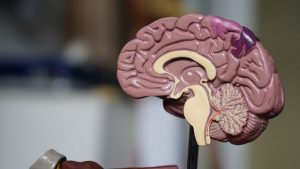Last week I read a post from Jesse Meadows, someone taking a critical studies approach to ADHD, called You’re using the word ‘neurodiversity’ wrong. Meadows did such a great job of explaining something I’ve been thinking a lot about lately, you should probably read their post instead of this one, which is mostly just my feels about the topic.
I was introduced to the word ‘neurodiversity’ and it’s friend neurodivergent as a useful umbrella term for a collection of related things like ADHD and autism. No-one quite explained it, so I got kind of the wrong idea about it. But it turns out that the actual meaning of it is much more interesting and useful to me.
People lately often talk about neurotypical and neurodivergent like they’re two types of brain. But as Meadows says, neurodiversity is a way of thinking about human variability and challenging default structures of society. It’s not a diagnosis, and it’s not a biological marker. It’s more like a willingness to re-think things we take for granted because we’ve been raised in a society which rewards behaviour that meets patriarchal, capitalist needs. If you don’t meet those needs, then your way of living is turned into a medical problem (or worse, a crime).
Autistic folks and people with ADHD are much more likely to have neurodivergent ways of thinking. But they can still be trapped in neurotypical societies and systems, and take on a kind of internalised prejudice because of that. And anyone willing to do the work of re-thinking how we live can be part of building neurodiversity in our world.

I feel like this really fits in to other activist stuff I’ve been learning. Humans so easily fall into thinking in binary terms. But bodies are too messy to be contained that way. We’re not zeroes and ones in the Matrix, we’re flesh and blood and networks of neurons.
Some other examples of binaries I was taught but now know aren’t real:
- Bodies don’t just come in two types: man or woman. Intersex and transgender people exist.
- Sexuality isn’t just straight or gay. Bisexual erasure is a thing, and asexual people exist too.
- I’m so unqualified to talk about race, but it’s obviously more complicated than just black and white. I mean that in a literal sense as well as metaphorically!
So why would ways of thinking and understanding the world be any different? There’s not just typical and non-typical. Hardly anyone is actually typical! Brain science is still so new, and almost all of the research done so far is by tertiary-educated white men who used their nearly-tertiary-educated white male students as research subjects. It’s slowly changing, but we can’t take what we know so far as being definitive of what a “normal” brain is.
A healthy ecosystem is a diverse ecosystem. Recognising that diversity is how we keep society and individuals safe and happy, I reckon.